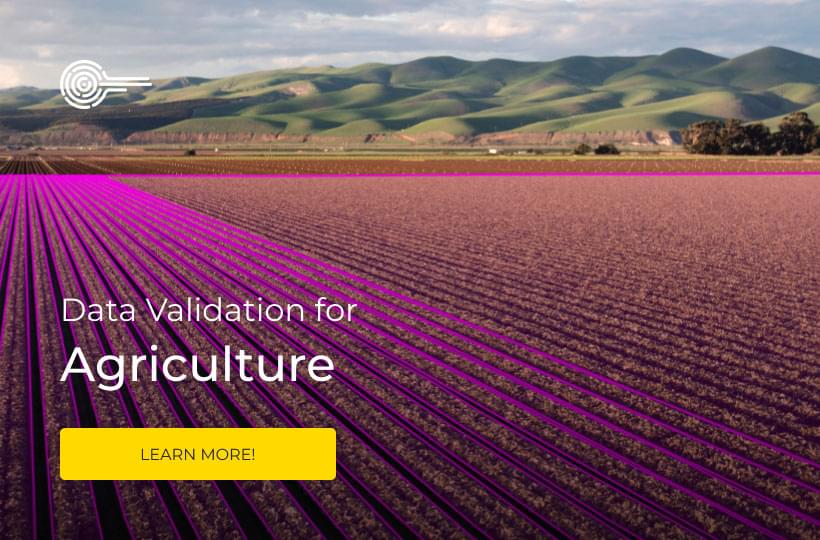AI Video annotation for Geospatial Applications
AI video Annotation is one of AI's most important tasks, especially for the geospatial industry. The task of video annotation is to label each frame or region of a video with semantic information. The goal is to provide the AI system with enough training data to learn how to do this task independently.
Annotation is a core component of many computer vision and machine learning projects. For example, search and retrieval, personalization, recommendations, etc., use machine learning. In this article, you'll learn how video annotation works in the geospatial industry and some everyday use cases.
The role of video annotation in machine learning projects
Recognize objects, places, and people in videos. AI video annotation and deep learning are essential technologies in geospatial applications. These technologies improve over time with better accuracy and faster performance.
Video annotation is a powerful tool for creating training data. It allows you to label the frames of a video and use them in conjunction with deep learning models or machine learning algorithms. The process of video annotation is complex and involves several steps:
- Collecting video data
- Annotating frames with labels
- Training a machine learning model on the annotated data
- Deploying the model in production
- Making continual improvements
Video annotation data is input to train deep learning or machine learning models. When you're building a model, you can use annotated video data. First, the video annotation process involves collecting the raw data. Next, you must annotate each frame with labels. Finally, you train a machine-learning model on the annotated data.

Data collection and annotation for geospatial applications
Aerial, drone, and satellite imagery provide raw data for geospatial applications. These data types are useful for mapping, monitoring, and understanding environmental changes.
Aerial imagery can map surface features and provide an overview of the landscape. You can use it for land surveying, geology, and forestry. Aerial imagery is also helpful for monitoring urban growth and monitoring changes in vegetation over time. In addition, you can track objects such as cars or boats on the road.
With drone and satellite imagery, you can track changes in buildings over time. You must annotate the data with labels to create models that detect vehicles and buildings from satellite images.
Video annotation software can use labels in an algorithm for dimension estimation. This process is known as semantic labeling. It allows you to extract features from unlabeled data.
Geospatial use cases for video annotation
When you use AI video annotation to train a deep learning model on geospatial data, it can identify objects in images or videos. This way, you can interpret your satellite imagery or drone footage using an artificial intelligence model.
Uses include:
- Agriculture
- Energy
- Logistics
- Mapping
- Surveillance
For example, suppose you're an agricultural company working with farmers to improve yields and reduce costs. It could be invaluable to have AI systems that can identify individual crops.
Video annotation is also vital when creating 3D models from images or videos. For example, suppose you have drone footage showing a building. You want to measure its windows' dimensions. In that case, you can use video annotation software to label each frame. Then use those labels in an algorithm for dimension estimation.
Agriculture
Training machine learning models can allow you to:
- Identify and classify individual crops
- Assess the disease status of plants
- Count individual stems, leaves, or fruit
- Detect pests
- Analyze the health and growth rate of crops
For example, suppose you have drone footage showing a field of flowers. You can use video annotation software to identify each flower as an orchid or a dandelion. Then use those labels to create a machine-learning model that predicts the species.

Energy
The energy sector also uses video annotation software to train machine learning models. These models analyze drone footage of power plants and wind farms. They can identify specific equipment types, measure their condition, and plan repairs.
Utilities can predict when equipment will need replacing, improving their planning ability. You can also use these models with other data and software to analyze a plant's or wind farm's efficiency. Then, you can determine where to make improvements and how.
Logistics
Models analyze drone footage of warehouses and trucking depots. Annotating this data enables you to identify specific equipment and its condition. Logistics companies can use these models to improve the efficiency of their operations. For example, they find areas where they need more trucks or employees.
Mapping and surveying
Surveying companies can machine learning models to create more detailed maps. For example, you can create 3D urban planning models and assess damage after natural disasters.
Models can analyze drone footage of buildings or areas of interest and determine the size, shape, and location. This data is helpful for mapping projects where surveyors cannot access a site because it is dangerous or difficult to reach.

Surveillance
Surveillance companies use machine learning models to process video footage and detect objects. For example, you can develop software that detects people in crowds or vehicles on the road.
Video annotation can also help law enforcement agencies. For example, it can analyze security footage and identify suspects. You can also identify an individual's face. Then, use facial recognition software to search known criminals or terrorist databases.
Final Thoughts
AI video annotation is a powerful tool for analyzing and understanding footage. You can use it to identify objects of interest, track their movement, and extract data points like speed and direction. This type of machine learning is essential in many industries, including surveillance, law enforcement, sports analytics, and more.
Businesses have more opportunities to use machine learning as the world becomes more connected and data-driven. Video annotation is just one example of how you can use AI to help improve your business operations.
Keymakr provides tools that make annotating video and data sets easy to train your machine-learning models.
